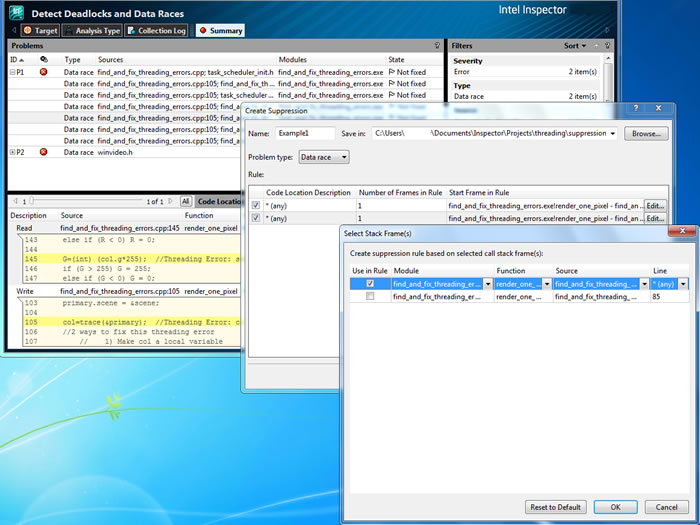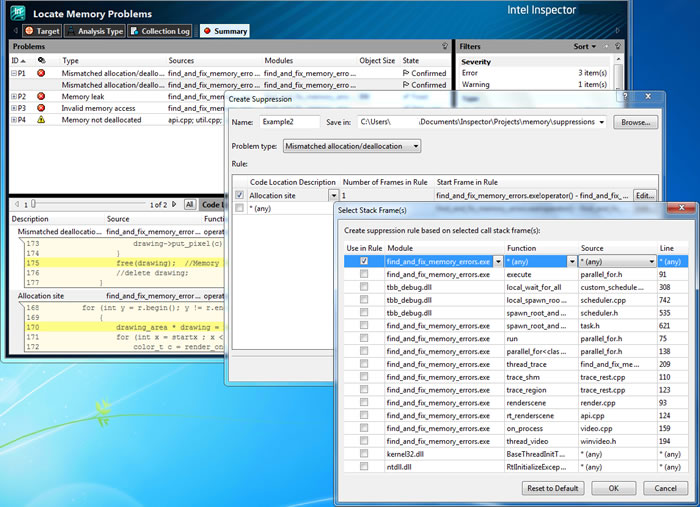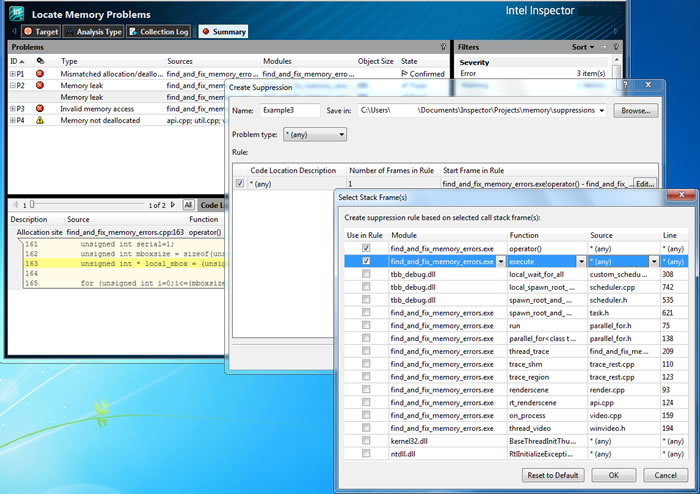A newer version of this document is available. Customers should click here to go to the newest version.
Suppression Rule Examples in the GUI
Although you are ultimately trying to suppress problems, the Intel Inspectorvehicle for defining a suppression rule is one or more code locations.
Narrow rules suppress a limited number of relevant problems; wider rules suppress a greater number of relevant problems.
Every rule applied during analysis adds processing time.
The goal: Suppress the greatest number of relevant problems with the fewest number of rules.
To review rules to be applied during analysis, check the Suppressions tab of the Project Properties dialog box.
To apply rules during analysis, select the Apply Suppressions radio button on the Target tab of the Project Properties dialog box.
A code location may be part of multiple problems; therefore, multiple rules may suppress the same code location, or a rule created to suppress one problem may partially impact another problem.
Suppression Rule Example 1
Suppression rule Example1 suppresses any Data race problem between Read and Write code locations with the following characteristics as the last-called frame in the stack: find_and_fix_threading_errors.exe module, render_one_pixel function, and find_and_fix_threading_errors.cpp source file.

Suppression Rule Example 2
Suppression rule Example2 suppresses any problem with an Allocation site code location whose last-called frame in the stack is in the find_and_fix_memory_errors.exe module.

Suppression Rule Example 3
Suppression rule Example3 suppresses any problem where the last-called frame in the stack is in the operator() function of the find_and_fix_memory_errors.exe module and the end of the stack path is execute calling operator().
